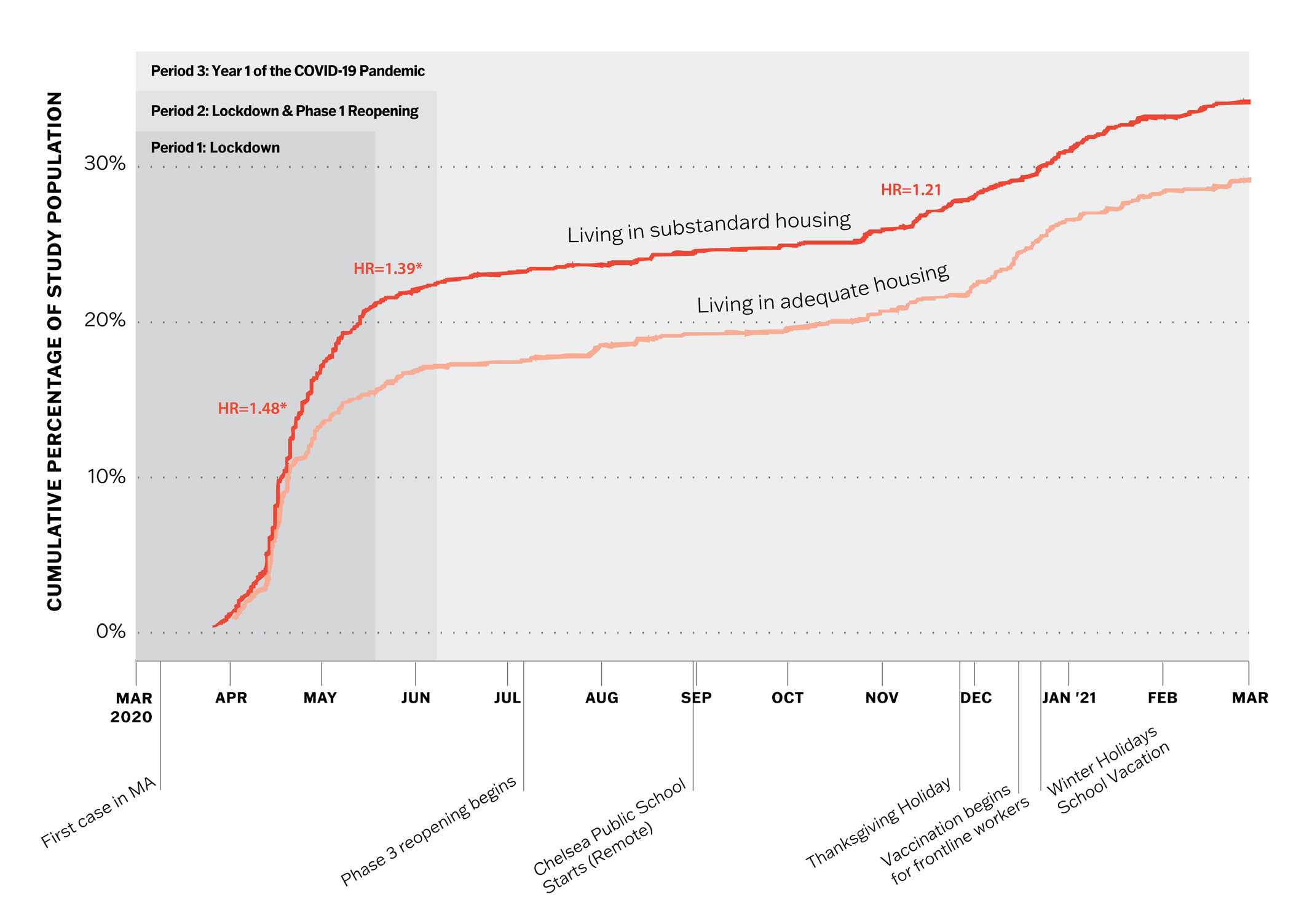“Substandard Housing and the Risk of Covid-19 Infection and Disease Severity: A Retrospective Cohort Study”
Population Health
Action Insights
Last Updated
Topics
Data and Evidence, Strategic Leadership and Management
Location
United States
Densely populated, underserved neighborhoods are vulnerable to public health risks. A study by researchers at the Bloomberg Harvard City Leadership Initiative shows how linking housing and health care data can deepen understanding of public health threats and help cities take action before, during, and after public health crises.
Read the Action Insights below, or download as a PDF for use later.
What makes cities attractive—proximity to people, amenities, and opportunities—makes them vulnerable, too. As Edward Glaeser and David Cutler argue in Survival of the City, disaster travels faster when people live close to one another. Managing healthy, safe, and affordable housing in densely populated areas is a major challenge for city leaders. A study supported by the Bloomberg Harvard City Leadership Initiative found that leveraging data from multiple sectors (e.g., education, health, housing, and social services) can help make this task easier. By combining datasets city leaders can identify where investments, services, or enforcement are needed most. This helps them allocate scarce resources strategically to make the greatest impact before, during, and after public health crises. Insights from a study in Chelsea, Massachusetts during the COVID-19 lockdown show how.
The City of Chelsea is located across the Mystic River from Boston and is one of the poorest cities in Massachusetts. With approximately 40,000 residents (informal estimates are as high as 75,000 when accounting for the undocumented population) crowded into just 1.8 square miles of land, it is difficult for lower income residents to secure safe and affordable housing. Most residents are Hispanic/Latino (66%), nearly half are foreign-born (47%), and almost a quarter live in poverty (23%). Chelsea is emblematic of the affordable housing crisis plaguing U.S. cities, which forces many low-income families into substandard housing. People often crowd into illegal “conversion apartments” (e.g., basements, closets, or porches) to avoid homelessness and remain close to jobs. Overcrowding can disrupt family relationships and impact depression, stress, and anxiety. Living in substandard housing—such as homes with inadequate ventilation, insect or rodent infestations, and mold—can also increase the risk of chronic illness and infectious disease.
When COVID-19 spread globally in 2020, public health leaders and city officials worried that substandard housing influenced COVID-19 risk, but there were no studies of the relationship between housing conditions and infection rates at the individual household level. To learn more about this relationship, we combined individual-level housing data from Chelsea City Hall (the city schedules housing inspections of rental properties regardless of whether residents submit a housing complaint) with health data from Mass General Brigham’s Research Patient Data Registry. We used resident addresses to match housing conditions with health records of Chelsea residents who had been tested for COVID-19 during the first year of the pandemic—March 1, 2020, through February 28, 2021. We considered people living in homes with a history of housing code violations to be living in substandard conditions.
We discovered that living in substandard housing during the lockdown period increased the risk of COVID-19 infection by 48%. However, once stay-at-home orders were lifted, the risk of COVID-19 infection was similar between people living in substandard versus adequate housing (see figure 1).
Figure 1. Cumulative proportion of the study population testing positive for COVID-19: Comparing those living in substandard versus adequate housing

Note: The figure shows the cumulative percentage of the study population testing positive for COVID-19 among those in substandard housing (red) and adequate housing (orange). The groups’ risk of infection diverges significantly during the lockdown period. After stay-at home advisories are lifted in June 2020, there is no difference in the rate of new infections between the two groups.
The study demonstrated a clear link between substandard housing in densely populated neighborhoods and risk of infection during the COVID-19 pandemic. Takeaways for city leaders include:
Cities, as places with large concentrations of people, are sites of tremendous possibility as well as deep vulnerability. The COVID-19 pandemic laid bare the risk of densely populated and underserved neighborhoods in the face of infectious disease. Identifying the most vulnerable residents and neighborhoods can drive proactive and equitable solutions before, during, and after a crisis and build resiliency to survive impending shocks. City leaders can use multi-sector data and collaborations to build healthy communities capable of withstanding such crises.
Population Health
Data-Smart City Solutions
Bloomberg Harvard City Leadership Initiative
Bloomberg Harvard City Leadership Initiative
Health Affairs
More Resources Like This
